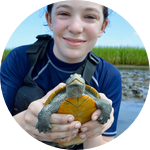93
0
0
References
- 1. Kolpin, D. W., Furlong, E. T., Meyer, M. T., Thurman, E. M., Zaugg, S. D., Barber, L. B., & Buxton, H. T. (2002). Response to Comment on “Pharmaceuticals, Hormones, and Other Organic Wastewater Contaminants in U.S. Streams, 1999−2000: A National Reconnaissance.” Environmental Science & Technology, 36(18), 4007–4008. doi:10.1021/es020136s
- 2. Hu, X. C., Andrews, D. Q., Lindstrom, A. B., Bruton, T. A., Schaider, L. A., Grandjean, P., … Sunderland, E. M. (2016). Detection of Poly- and Perfluoroalkyl Substances (PFASs) in U.S. Drinking Water Linked to Industrial Sites, Military Fire Training Areas, and Wastewater Treatment Plants. Environmental Science & Technology Letters, 3(10), 344–350. doi:10.1021/acs.estlett.6b00260
Like?
Please wait...
About This Project
We are routinely exposed to substances with trace concentrations of harmful chemicals. These chemicals are often associated with cancer, lowered IQ, behavioral changes, particularly for young children. Overcoming challenges of testing affordability and accessibility is difficult. This experiment employs an easy-to-use test for water quality and allows citizen scientists to identify harmful chemicals and prevent crises like Flint, MI in 2014 and Cape Fear, NC in 2017.
More Lab Notes From This Project

Browse Other Projects on Experiment
Related Projects
Elucidating the mysterious life of New Zealand eels using environmental DNA methods
Eels are a highly valued fishery, particularly among Māori peoples, and a crucial indicator of...
Helping conservation biologists with 3D glasses for wildlife camera traps
Camera traps photos tell you what animals are in an area, but figuring out how many is tricky. E.g. two...
What drives the color change in green anoles?
Green anoles (Anolis carolinensis) morphs from green to brown, and it is not known why. In this experiment...




